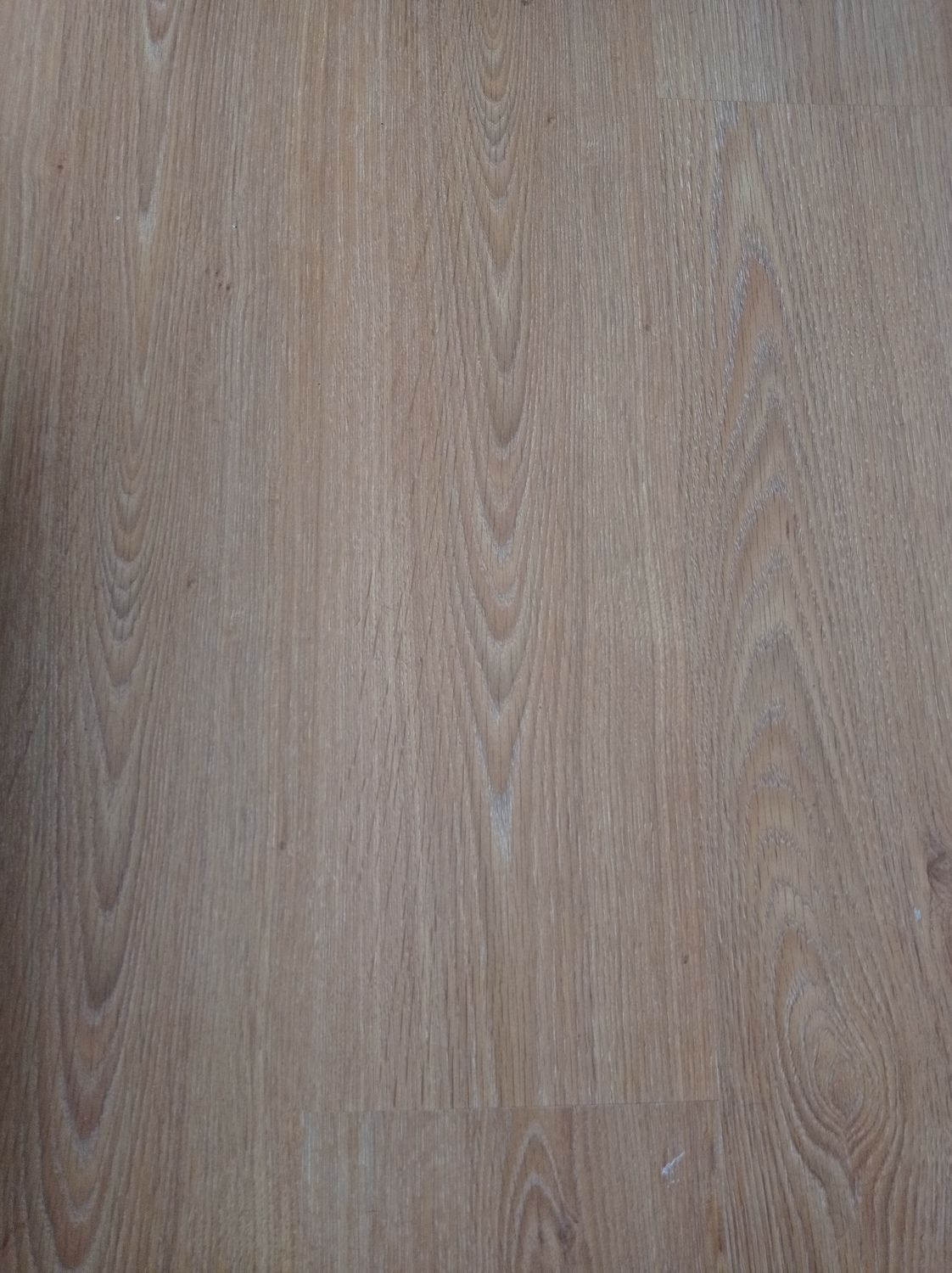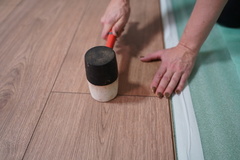How to fix squeaky floors
Updated: 2022-01-12
By Paul Bianchina
Like a dripping faucet, floor squeaks can be one of those noisy and irritating little nuisances that pop up in our homes from time to time. If you have a squeak that's driving you to distraction, here are a couple of things you might want to try.

For the most part, floor squeaks originate in the subfloor area and are caused by two pieces of wood rubbing against each other, or by the wood rubbing against a fastener. So, the first order of business is to do a little more research. Walk around on the floor, locate as many of the squeaks as possible, and mark them on the floor with pieces of masking tape.
If the squeaks are occurring when you step on the floor right near a wall, they are probably due to lumber shrinkage around the nails that hold the wall to the floor. This causes the joint between the wall and the floor to flex somewhat, and the squeak occurs from the wood rubbing on the nails.
This type of squeak is usually the easiest to repair. Directly adjacent to where the squeak is occurring, simply drive a wooden shim between the top of the subfloor and the underside of the wall plate, which can be done without disturbing the floor covering or the trim. Drive the shim in as far as you can without overly forcing it, then snap or cut it off flush with the wall. The shim wedges the small gap between floor and wall plate, stops the flexing, and eliminates the squeak.
If the squeaks are not near walls, they are probably coming from movement between the subfloor and the floor joists below, which could be from inadequate nailing or insufficient or improperly applied adhesive. In older houses, where the floors were framed with solid lumber as opposed to the more stable I-joists in use today, the noise can also be coming from wood that has dried out and twisted or pulled away from the wood adjacent to it, causing movement--and noise--between the two pieces.
For these squeaks, you need one person to go under the house with a strong light and tape measure while the other one stays up top. Using measurements and pressure on the floor from walking, locate as carefully as possible from underneath where the squeaks are coming from. While the upstairs person applies and releases pressure, study the area to see what's going on. You may see the floor joists deflecting up and down; you may see them rubbing against other wood, or against ducts or pipes; or you may see that some of the supports under the joists are not fully touching one another.
In the event of gaps between pieces of wood, you may be able to solve the problem by taking wooden shims, coating them with woodworker's glue, and driving them into the gaps with a hammer (the glue keeps them from working loose again). If the wood is moving against a pipe or duct, you can correct that through the use of additional strapping to stop the movement.
If you find a lot of areas where the subfloor seems to be moving up and down on the joists--as opposed to the subfloor and joist moving up and down together--then the answer is probably going to be to drive screws down through the subfloor from above and into the joists.
The best way to do this is to roll back the carpet and pad to access the subfloor underneath. Study the subfloor to see where the existing fasteners are, which indicates where the joists are. Drive screws through the subfloor and into the joists, getting at least 2 inches or penetration into the joist. Do not drive screws directly through the carpet, as this will damage the carpet back and may void the carpet manufacturer's warranty.
If you don't relish the thought of rolling back your carpet--or worse yet, you have hardwood or tile flooring in that area--there is a product on the market called Squeak Enders. Squeak Enders use a bracket assembly that attaches to both the joist and to the underside of the subfloor, which locks the two together and stops the floor from moving. Squeak Enders have to be installed from inside the crawl space, and they can get a little expensive if you have to install a lot of them. However, they work very well in most situations, and might prove less costly then dealing with the finished flooring above.
Comments (0)

